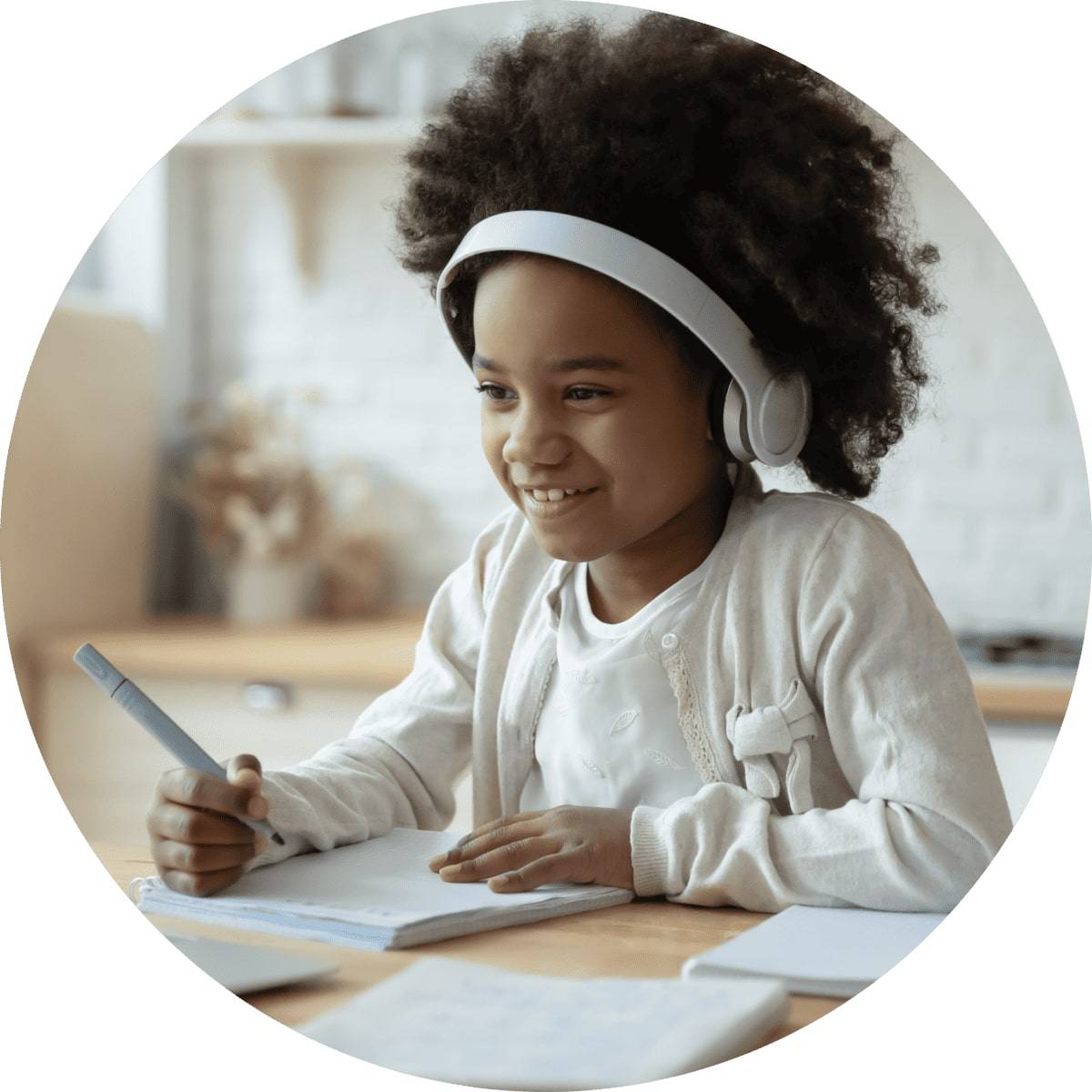Homeschooling Children with Disabilities: Strategies for Success
When thinking about homeschooling a child with a disability, parents often have a lot of questions, like:
- Will my child meet their goals?
- Will they receive the support they need?
- As a parent, can I homeschool my disabled child?
- Can they get caught up and stay on top of their workload?
- Will they receive a quality, well-rounded education?
- Can homeschooling programs meet the individual needs of my child?
The answer to these questions is a resounding “yes”! Homeschooling can serve all students, including those with disabilities, by providing flexibility and learning support. If you’re considering making the switch, check out our How to Start Homeschooling page.
At Miacademy, we create our homeschool program with the needs of all students in mind. Our virtual, interactive platform is designed to offer a wide range of supports for students with disabilities.
These supports are not specific to any one “type” of student. Instead, we provide a number of tools that parents of disabled children can use to customize the learning experience. This can help them to ensure their individual needs are being met, all the way from kindergarten to high school.
How to Homeschool a Disabled Child
If you’re considering homeschooling your child with a disability or learning variability, know that you’re not alone. Many families have found great success in educating their children at home! However, starting your homeschooling journey can be a daunting task. This is especially true when trying to ensure you’ll be ready to meet your child’s educational needs.
If you’re searching for a high-quality homeschool program for students with disabilities or learning variabilities, look for options that are:
- Customizable to your child’s individual needs
- Flexible and self-paced to avoid stress and burnout
- Accredited by an authority on inclusive learning
- Supportive and easy-to-use for both you and your child
- Aligned with your family’s homeschooling style
- Adaptable to meet your child’s changing needs over time
The most important thing to remember about homeschooling a child with a disability is that there is no one-size-fits-all approach. Every child’s needs are different! One of the most powerful things about homeschooling is that it allows you to tailor your child’s education to their needs.
Miacademy’s Accredited Homeschool Programs for Students with Disabilities
Miacademy’s online learning program is designed with all learners in mind, including students with disabilities and learning variabilities. We provide supports that encourage our learners to:
- Take tests without the pressure of timers
- Remain focused with our engaging learning videos
- Build confidence with our read-aloud and text-to-speech options
- Reinforce learning with supplemental materials
- Work at their own pace with a personalized curriculum
- Pursue topics that interest them
Flexible Learning With Miacademy
With Miacademy, parents can determine the pace at which students progress through their assigned content. Additionally, parents can select courses based on ability, not grade level.
That means your child may be working in a science course recommended for 6th grade, but a reading course recommended for 3rd grade – and that’s OK! We firmly believe in meeting every student where they’re at so we can help them to the next steps of their learning journey. Our program is extremely flexible and allows you to easily assign lessons across grade levels to best suit your child’s needs, abilities, and interests.
Children can revisit previous lessons, play practice games, or watch teaching videos as often as they need to. This not only supports retention, but also ensures that they never feel the need to move on before they are ready. Self-paced learning is an important component of a homeschooling program for kids with disabilities!
Miacademy also has built-in accessibility features like text-to-speech to ensure all students can have an amazing learning experience. Plus, extension and enrichment opportunities are included within our lessons for those who want additional practice or an extra challenge.
My son is dyslexic and really appreciates how clearly everything is spoken or read to him. He also has ADHD, so keeping his attention until he masters something is quite amazing! To top it off, after reviewing the curriculum sequence and setting him at 5th grade math, he is so proud and excited to finally be “almost challenged with math work” – his words.
– Miacademy parent
We switched our son who is a 4th grader & has ADHD, Austim and some other challenges to Miacademy and my son & I both absolutely love, and I mean love Miacademy!!! It’s been a game changer in an extremely positive way for our son. I love how I completely control my son’s learning and what courses he takes. We truly love Miacademy.
– Miacademy parent
To learn more about our accredited homeschool program, you can check out some of our learning videos or visit our website. Our amazing customer service team is always available to answer any questions you may have about homeschooling a disabled child with Miacademy!





